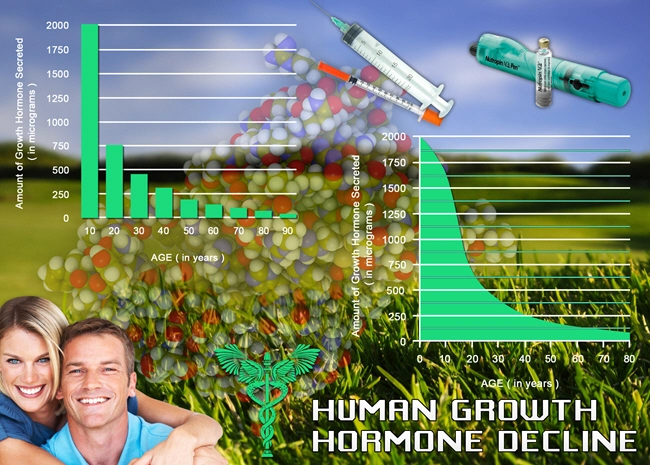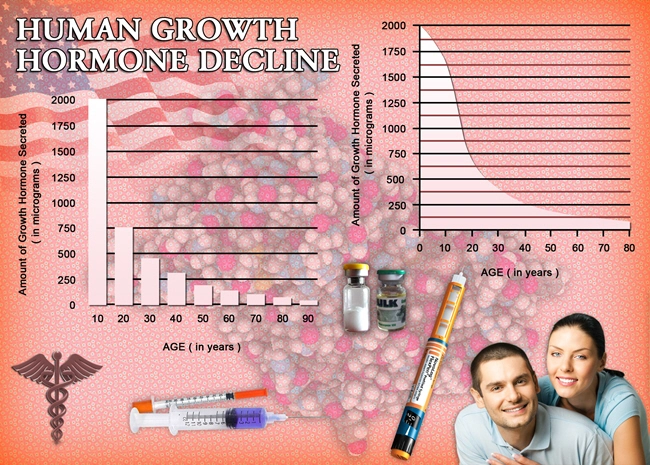
Video Link: https://vimeo.com/285984350
Video Download: Click Here To Download Video
Video Stream: Click Here To Stream Video
The top 25 beneficial foods that you should be eating every week!
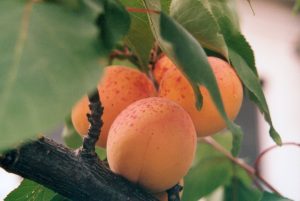 Apricots – Many people tend to forget about apricots except for those that love them in the dried form. Either way you eat them is fine, just remember that dried fruits have higher concentrations of sugars in them.
Apricots – Many people tend to forget about apricots except for those that love them in the dried form. Either way you eat them is fine, just remember that dried fruits have higher concentrations of sugars in them.
Apricots resemble a peach but have a tart flavor like a plum. Of course, as a fruit, they contain a multitude of vitamins and minerals. A major one is beta carotene, being orange in color, after all. Beta carotene is a potent antioxidant – and we love our antioxidants. They keep us looking young!
These yummy fruits have other antioxidants as well that promote eye and skin health, as well as lower inflammation.
In addition, apricots are particularly high in soluble fiber, which is an important factor in maintaining stable blood sugar levels and a healthy gut and microbiome.
Bananas – Bananas are interesting because you get different benefits depending on when you eat the delicious fruit – more ripe or unripe with some green. Greenish bananas hold more resistant starch while the browner bananas have more simple sugars, such as glucose and fructose.
Bananas are also rich in pectin, another type of fiber, and in combination with the resistant starch, it’s a double whammy towards improving digestion as well as stabilizing blood sugar levels.
The yellow fruit is also known for having a lot of potassium, with anecdotal evidence of bananas helping with leg cramps. Potassium is essential for heart health in that it controls blood pressure – something many people would benefit from.
Beans – Beans are overflowing with protein, vitamins and minerals – and they’re super affordable too! What could be better and with so many choices to choose from? The number one health benefit is the plant-based protein and we all know that protein is essential for repairing and growing the human body. All beans contain amino acids (the building blocks of protein) but of all the beans, only soybeans contain all nine essential amino acids (making them a complete protein). In addition, they are lower in calories and saturated fat than other protein sources (meat and full fat dairy).
Another vital nutrient that beans have a lot of is folic acid, also known as folate. This nutrient is VERY important for pregnant women as it prevents neural tube defects in a growing fetus. In adults, folate is essential in creating new red blood cells.
Other benefits include reduced risk of cancer and heart attacks.
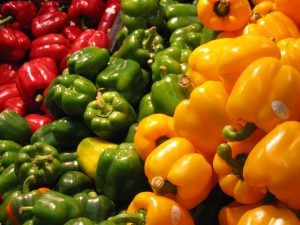 Bell Peppers – Did you know that all bell peppers start out as green? And the different colored bell peppers are just ripened green bell peppers picked at different stages? They turn from green, to yellow, orange and finally red. What is great about this is that the color change also indicates a nutritional change, so it’s essential to eat all the different colors! Enjoy.
Bell Peppers – Did you know that all bell peppers start out as green? And the different colored bell peppers are just ripened green bell peppers picked at different stages? They turn from green, to yellow, orange and finally red. What is great about this is that the color change also indicates a nutritional change, so it’s essential to eat all the different colors! Enjoy.
Bell peppers also contain lots of vitamin C, which is an essential nutrient that we cannot make ourselves – we must consume it from our diet. Vitamin C plays a huge role in immune system health. Eat some bell peppers and oranges several times a week and you’ll be giving your immune system a major boost!
The colorful peppers also contain a lot of folate, so they are another good choice for pregnant women.
Broccoli – This mini tree-looking vegetable has so many benefits, it’s almost too many to list here. It can literally be called a powerhouse of nutrition. For example, one cup of raw broccoli contains 116% of the recommended daily intake of vitamin K and 135% of vitamin C. Wow!
There are also potent antioxidants. One of these is antioxidants that is gleaned from broccoli during digestion has been shown in studies to reduce blood sugar, cholesterol, oxidative stress AND chronic disease development.
In addition, a reduction of inflammation had also been noted. Broccoli has bioactive compounds that reduce inflammation in the body’s tissues.
Canteloupe – Another food item with tons of beta-carotene is canteloupe. Essentially, any fruit or vegetable that is orange or orangeish in color, will have beta-carotene. It’s what gives these foods their colors in addition to their antioxidant benefits! One ingested, beta-carotene is either converted into vitamin A or acts as an antioxidant in fighting off free radicals.
Canteloupe also has tons of vitamin C, another VERY important vitamin that we all need to eat more of! Especially now, in the midst of the COVID-19 pandemic. Both vitamin C and D will help you combat illness and improve your immunity.
Despite not being a vitamin or mineral, one thing canteloupe has a lot of is WATER. We need to stay adequately hydrated as well so that our cells and tissues function efficiently. The water content of canteloupe is a whopping 90 percent!
Carrots – Here we go with the beta-carotene again. Both carrots and canteloupe have the highest levels of beta-carotene in a food item. So crunch, crunch away and fight those free radicals. And yet again, we have lots of vitamin C. Are we seeing a pattern here? Fruits and vegetables have soooooo many vitamins and minerals in them that contribute to our health. We need to be regularly consuming them.
A top beauty benefit of eating carrots is healthy and happy hair. With all those vitamins, are we really surprised?
And what benefits the hair, usually benefits the skin also. Eat lots of carrots and you’ll have glowing skin too. Just don’t eat too much or it could literally turn yellowish-orange!
Garbanzo Beans – One of the more delightful beans out there, garbanzo beans are known to have a major impact on lowering blood sugar levels. Their glycemic index is also very low and these are great beans for diabetics to consume. In fact, eating them regularly can help to stave off this sometimes debilitating disease.
Garbanzo beans also have a fair amount of protein and fiber with both of these helping to keep your appetite under control. Both protein and fiber work together to slow digestion, keeping you feeling fuller for longer.
For all of those vegetarians and vegans out there, garbanzo beans are a wonderful source of plant-based protein. They are so close to being a complete protein too – just missing methionine. Nonetheless, their protein content is comparable to black beans and lentils, two other fantastic sources of plant-based protein.
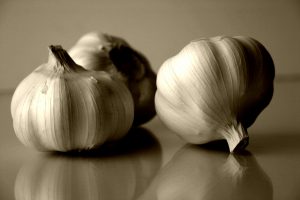 Garlic – Nature’s prescription for good health. This pungent but delicious bulb is native to Central Asia and its use dates back to over 5,000 years ago. The ancient Egyptians even placed garlic into the tombs of the celebrated Pharaohs.
Garlic – Nature’s prescription for good health. This pungent but delicious bulb is native to Central Asia and its use dates back to over 5,000 years ago. The ancient Egyptians even placed garlic into the tombs of the celebrated Pharaohs.
Garlic has been used to flavor dishes for centuries but it also has other important benefits including medicinal and healing properties. For example, it’s a natural antibacterial agent, able to help you combat many colds and reduce the symptoms. It is also considered an “anti-cancer” food because it contains multiple anti-carcinogenic compounds that inhibit the growth of tumors.
There are many more benefits of garlic – too many to list here.
Greens (Spinach, Kale, Chard) – We are always told to eat our greens, such as spinach. Is it really worth it? YES. Green leafy vegetables might not be your favorite, but you should definitely incorporate them in your diet in any way you can. For plant-based eaters, the calcium content alone is worth it, since dairy may be avoided in this type of diet.
In addition, greens have tons of micronutrients including vitamins C, E and even beta-carotene. Because of all the fiber, eating greens consistently will improve your digestion tremendously. This is because of insoluble fibers that push waste through the digestive tract and out of the body. They also have a high amount of water which also helps with digestion.
Interestingly, greens have an effect on our moods. Choline is a micronutrient present in most greens that is a precursor to acetylcholine, a neurotransmitter that plays a role in learning, mood and memory. So follow the advice of your Mom and eat your greens!
Kiwi – A small fruit that packs a serious punch. Not only is it super tasty but they are full of health benefits as well. All those micronutrients: vitamin C, K, E, folate and potassium. More fiber and antioxidants. The list goes on.
The consumption of fresh fruit, and especially kiwi that is high in vitamin C and other antioxidants, has been seen to reduce the effects of and treat asthma. All that fiber also aids in digestion, slowing it down and making it more regular. With all the vitamin C, the immune system greatly benefits and better capable of fighting off illness.
Lamb – Lamb may be considered the healthiest meat out there that is commonly available to consumers. The nutrition profile is rather impressive. Lamb is a red meat and therefore, is high in myoglobin content, meaning it has lots of iron-rich protein to bite into. This myoglobin is what gives meat its red color. Lamb is also very tender, making it popular with meat-eaters.
The nutritional value includes protein, healthy fats, vitamins and minerals. In terms of fat, lamb has a higher omege-3 content as compared to other meats. Omega-3s can be hard to get in the diet but eating lamb will ensure you are getting enough.
Another healthy fat is the natural trans-fatty acid CLA (conjugated linoleic acid). Not to be confused with the synthetic trans fats, CLA has been shown to possibly reduce the risk of heart attacks.
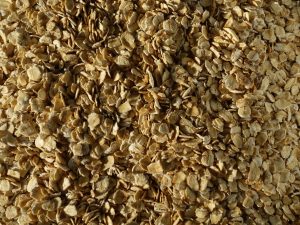 Oat Bran – You’ve heard of oatmeal, but have you heard of or eaten oat bran? On an oat kernel, the bran is the outer layer of the skin of the grain. It is obviously edible, containing fiber, antioxidants and vitamins. It used to be that oat bran was just fed to the livestock and animals of a homestead but now we’ve realized that the oat bran can give us many benefits as well. Some of these benefits include lowering cholesterol, slowing down sugar and fat absorption, increasing antioxidant uptake, supporting the health of the bowels and lowering the risk of colorectal cancer. Eating either oat bran or oatmeal means you are eating one of the most healthiest foods available!
Oat Bran – You’ve heard of oatmeal, but have you heard of or eaten oat bran? On an oat kernel, the bran is the outer layer of the skin of the grain. It is obviously edible, containing fiber, antioxidants and vitamins. It used to be that oat bran was just fed to the livestock and animals of a homestead but now we’ve realized that the oat bran can give us many benefits as well. Some of these benefits include lowering cholesterol, slowing down sugar and fat absorption, increasing antioxidant uptake, supporting the health of the bowels and lowering the risk of colorectal cancer. Eating either oat bran or oatmeal means you are eating one of the most healthiest foods available!
Onions – MMMmm onions – a vegetable that is cooked with almost every meal to add flavor and health! The onion is the bulb part of the vegetable plant that we consume and it is a food reserve for the plant so it can survive during the winter seasons. What’s amazing is that onions have been used for centuries, dating back to 5,000 BC in China. Even ancient Egyptians used onions in their burial ceremonies.
Onions can be eaten cooked or raw. Not only do they contain lots of vitamin C and B6, folate, iron and potassium, but also two phytochemicals called allium and allyl disulphide. Once ingested, both of these convert to allicin, which has been shown in scientific studies to combat cancer and diabetes. It can even lower blood pressure levels. In addition, the onion’s relatives also offer similar benefits: chives, garlic, leeks, shallots, etc.
So don’t be shy, add onions to as many dishes as you can! Not only does if offer a wonderful flavor, but multiple health benefits as well.
Oranges – In terms of vitamins found in oranges, your first though is most likely vitamin C. And you are correct! Oranges are flush with vitamin C but they also contain many other vitamins as well. They are a nutritional powerhouse.
First off, one medium orange contains about a half cup of water – something we need to survive and most Americans do not drink enough of. Getting some water from our food, and especially fruit, is a great idea. In addition, there is a lot of fiber as well, something that Americans also do not get enough of. Fiber aids in digestion and helps to regulate blood sugar and insulin levels.
Back to vitamin C: oranges can provide up to 80% of your daily requirement of vitamin C. Amazing! Vitamin C is great because it helps us to absorb iron in our blood, something very important for premenopausal women who lose iron every month.
Papaya – This interesting looking orange fruit is surprisingly very healthy and of great benefit to diabetics, nicknamed ‘fruits of angels’. Major benefits of eating papaya include the lowering of cholesterol, increasing weight loss, immunity boosts, eases menstrual pains and has anti-aging properties.
The fruit is fleshy and tasty, with low sugar content and glycemic index, making them a tasty treat for diabetics. The vitamins and nutrients also contribute to combating heart disease in diabetics.
The enzyme papain can help to regulate and ease the pain of menstrual periods for women. Premenopausal women should think about getting several of these during the time of the month.
One medium sized papaya contains just 120 calories, but it is full of fiber, leaving you feeling full and satisfied, helping you to lose weight.
Fresh Pasta – Fresh pasta is a bit different than the dried pasta that we find in the grocery stores. Take a trip to Italy to see what I mean. Alas, you do not need to go to Italy to make your own fresh pasta however. It’s possible to find some in an Italian market as well.
Fresh pasta contains eggs and more water which makes it more tender than the dried variety and does not take as long to cook – yay!
Because fresh pasta contains eggs, you gain the additional benefits of eggs while you eat!
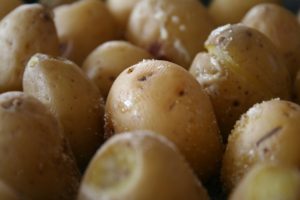 Baked Potatoes – Just because people are tending to go the low-carb route doesn’t mean that potatoes should be skipped over. They should be a staple, actually and baked most of the time. Baked potatoes contain a good amount of choline, which is something that many Americans do not get enough of. Scientists believe that choline deficiency may possibly be the cause of inflammatory diseases such as rheumatoid arthritis and fibromyalgia.
Baked Potatoes – Just because people are tending to go the low-carb route doesn’t mean that potatoes should be skipped over. They should be a staple, actually and baked most of the time. Baked potatoes contain a good amount of choline, which is something that many Americans do not get enough of. Scientists believe that choline deficiency may possibly be the cause of inflammatory diseases such as rheumatoid arthritis and fibromyalgia.
In addition, there is lots of fiber, which helps with digestion, constipation and regulating irritable bowel syndrome.
Potatoes are a low-fat and low-cholesterol food which means they do not contribute to heart disease or stroke. Given that they are so filling, they should be eaten many times during the week and any foods that are harmful to the heart could be replaced by potatoes.
Brown Rice – Brown rice is an unrefined whole grain that is a rice kernel with the hull removed. Remember oat bran? The rice kernel in brown rice maintains the bran layer as well as the germ layer. This makes brown rice much more nutritious and flavorful than white rice.
Brown rice is a complex carbohydrate but it has a low glycemic index which is a benefit to diabetics. It reduces insulin surges and stabilizes blood sugar.
Its high fiber content contributes to improving the digestion process. The bran layer, when compared to eating white rice, slowed bowel emptying, which bulks stool. A good thing! Fiber will help ease constipation and colitis.
One study also found that brown rice benefits lactating mothers in that it helps the body to resist stress and improve immunity. Try replacing brown rice with white rice and see how it goes. Who knows, you might like it better!
Tomatoes – Another super food on the list! Tomatoes used to make many people nervous to eat or they wouldn’t eat them at all because tomatoes are actually a part of the nightshade family – a family of plants that contains many poisonous species for humans. However, tomatoes will not hurt you – they actually contain many, many health benefits.
Tomatoes are the fourth most popular fresh-market vegetable behind potatoes, lettuce and onions – and for good reason! Tomatoes help protect against cancer, stabilize blood pressure and reduce glucose in the blood – a major benefit for diabetics.
These juicy red fruits contain lots of vitamin C and other antioxidants. Of course, the antioxidants fight free radicals, which are also known to cause cancer. Fight cancer by eating a BLT or bruschetta!
Lycopene is a polyphenol that is abundant in tomatoes as well and it has been shown to prevent one type of prostate cancer. Lycopene is also what gives tomatoes their red color.
In addition, the high water and fiber content of tomatoes helps to support digestion and healthy bowel movements, thus helping to prevent rectal or colon cancer as well.
Water-Packed Tuna – Tuna is very popular seafood dish, both cooked and raw, as in sushi. The fish meat is very tasty and it also contains a list of nutrients: omega-3 fats, vitamins B12 and B6, magnesium, selenium and phosphorus.
In addition, there is lots of protein as well, aiding in muscle gain and tissue maintenance. The omega-3 fats prevent damage to blood vessels. Saturated fat is what causes damage and tuna is very low in saturated fat. It is a very healthy meat to consume.
Tuna contains phosphorus which is an essential mineral for the human body, especially for bone and teeth health. It also aids in repairing damaged cells and tissues. Phosphorus is one important mineral! Get adequate amounts by eating some tuna.
Turkey (skinless breast) – The skinless breast of the turkey provides lots of health benefits with any fat, allowing you to eat a good amount of it without worrying about gaining weight and feeling full. This portion of the turkey is higher in protein than the chicken counterpart, making it a great alternative if you are bored of chicken and need something different.
The breast contains zero carbs, almost no fat and it mostly protein. The perfect food for bodybuilders and power lifters, alike.
Turkey is known to contain tryptophan, an amino acid that is known to make you sleepy. This amino acid has been found to help combat depression and can help you to sleep better. Win-win!
Yams – Yes, yams and sweet potatoes are two different things. Yams are less sweet and have more starch. A yam is considered a tuber with a brown exterior and variable interiors: white, yellow, purple or pink depending on how mature the yam is.
Yams are packed with nutrition, with high amounts of potassium and manganese, which are essential for bone health, growth, cellular metabolism and heart health.
Yams may also boost brain function. In a recent scientific study, subjects who took a yam extract supplement over the course of 12 weeks scored higher on a brain function test than the subjects who didn’t take the supplement. Promising results!
A unique compound that yams contain is diosgenin. This compound has been shown to promote neuron growth and improve brain function. In mice studies, diosgenin improved their memory and learning abilities when tested in several mazes.
Yogurt – A popular dairy food item that can be mixed with fruit, granola and other goodies, yogurt hosts an impressive range of health benefits. Yogurt is created by fermenting milk with bacteria. Sounds gross, but the product sure is delicious!
Plain, unsweetened yogurt is the healthiest variety of yogurt you can consume because it is rich in nutrients, containing almost all the nutrients your body needs in a day.
One of these nutrients is calcium which is necessary for bone and teeth health. A cup of yogurt provides 49% of your daily needs!
Yogurt is also high in protein and is a good alternative to meat for a protein source if you are looking to expand your palate.
Yogurt has also been known to improve digestive health, due to the live bacteria (probiotics) that are abundant in certain yogurts. Check for “contains live, active cultures” on the label.
 Water – Specifically eight glasses of water! Number one, adequate hydration is SUPER important for health, wellness and longevity. Our bodies NEED water and we are composed of mostly water ourselves. It is critical that we consume enough water daily to meet our needs.
Water – Specifically eight glasses of water! Number one, adequate hydration is SUPER important for health, wellness and longevity. Our bodies NEED water and we are composed of mostly water ourselves. It is critical that we consume enough water daily to meet our needs.
If we consume an average of 6.5 cups of water a day, we tend to eat less and on average, 200 calories less each day.
The benefits of consuming enough water go further than reducing caloric intake and weight loss, but also include improving kidney function and promoting healthy digestion. The kidneys detox our bodies by using water to sift out the waste and transport it to the bladder. A very important job, indeed. Hence, if you do not drink enough water, you are more at risk for a kidney stone.
Adequate hydration also promotes clear skin, improved brain function and the soothing of sore joints.
Reference
21 health foods you should never eat
Contact Us Today For A Free Consultation
Dear Patient,
Once you have completing the above contact form, for security purposes and confirmation, please confirm your information by calling us.
Please call now: 1-800-380-5339.
Welcoming You To Our Clinic, Professor Tom Henderson.

- Obese Patients Have a Higher COVID-19 Mortality Risk Than the General Public [Last Updated On: January 24th, 2025] [Originally Added On: August 21st, 2020]
- The Health and Hormone Balancing Qualities of Broccoli [Last Updated On: August 11th, 2025] [Originally Added On: August 27th, 2020]
- What to eat to boost testosterone [Last Updated On: September 14th, 2025] [Originally Added On: December 14th, 2020]
- Breaking a Weight Loss Plateau: How to Reduce Body Fat When Nothing Seems to be Working [Last Updated On: January 20th, 2025] [Originally Added On: February 16th, 2021]
- Fight Inflammation and Osteoporosis with Beets! [Last Updated On: January 14th, 2025] [Originally Added On: February 18th, 2021]
- Break a Weight Loss Plateau with Apple Cider Vinegar [Last Updated On: January 14th, 2025] [Originally Added On: February 20th, 2021]
- An Intriguing Look into How Growth Hormone Production and Fasting are Linked [Last Updated On: January 18th, 2025] [Originally Added On: February 21st, 2021]
- Health Reasons for a Vegan Diet [Last Updated On: September 24th, 2024] [Originally Added On: April 2nd, 2021]
- Leafy Greens are Medicine for Your Gut [Last Updated On: September 27th, 2025] [Originally Added On: April 23rd, 2021]
- All Praise to the Spud -- the Delicious, Health-Giving Potato, That Is [Last Updated On: August 12th, 2025] [Originally Added On: June 1st, 2021]
- 16 Cancer-Causing Foods to Avoid [Last Updated On: May 21st, 2025] [Originally Added On: August 12th, 2021]
- Longevity and Anti-Aging -- The Use of Flax Seed Oil [Last Updated On: May 7th, 2025] [Originally Added On: August 17th, 2021]
- Essential Amino Acids Critical to Health and Hormone Balance [Last Updated On: June 13th, 2025] [Originally Added On: October 6th, 2021]
- Growth Hormone and Calcium [Last Updated On: January 11th, 2025] [Originally Added On: October 16th, 2021]
- Growth Hormone and Coffee [Last Updated On: January 9th, 2025] [Originally Added On: October 19th, 2021]
- The Importance of Protein in Weight Loss and Testosterone Production [Last Updated On: January 19th, 2025] [Originally Added On: October 19th, 2021]
- Testosterone, Growth Hormone, and Sugar. [Last Updated On: January 9th, 2025] [Originally Added On: October 19th, 2021]
- Testosterone, Growth Hormone, and Processed Meat [Last Updated On: January 8th, 2025] [Originally Added On: October 19th, 2021]
- Growth Hormone and Intermittent Fasting [Last Updated On: January 7th, 2025] [Originally Added On: October 19th, 2021]
- Growth Hormone and the Importance of Nutrition [Last Updated On: January 7th, 2025] [Originally Added On: October 20th, 2021]
- Growth Hormone Stops Inflammation! [Last Updated On: January 8th, 2025] [Originally Added On: October 20th, 2021]
- Growth Hormone and Sugar Addiction [Last Updated On: January 4th, 2025] [Originally Added On: October 20th, 2021]
- Growth Hormone and Red Meat [Last Updated On: January 5th, 2025] [Originally Added On: October 20th, 2021]
- Boost Growth Hormone with Sleep [Last Updated On: May 20th, 2025] [Originally Added On: October 20th, 2021]
- A Natural Acid Found in Apples Prevents Muscle Loss AKA Sarcopenia [Last Updated On: January 10th, 2025] [Originally Added On: October 20th, 2021]
- Growth Hormone and Organic Foods. [Last Updated On: January 3rd, 2025] [Originally Added On: October 21st, 2021]
- Growth Hormone and Acidosis [Last Updated On: January 5th, 2025] [Originally Added On: October 21st, 2021]
- Growth Hormone Food Choices [Last Updated On: January 2nd, 2025] [Originally Added On: October 21st, 2021]
- Growth Hormone and Cholesterol: the Surprising Link [Last Updated On: January 6th, 2025] [Originally Added On: October 22nd, 2021]
- Growth Hormone and Weight Loss [Last Updated On: January 3rd, 2025] [Originally Added On: October 22nd, 2021]
- Growth Hormone Reduces Inflammation [Last Updated On: January 4th, 2025] [Originally Added On: October 24th, 2021]
- What You Eat Impacts Both Your Sleep AND Your Growth Hormone Production [Last Updated On: January 10th, 2025] [Originally Added On: October 24th, 2021]
- Growth Hormone Lowers Blood Sugar [Last Updated On: January 6th, 2025] [Originally Added On: October 24th, 2021]
- Testosterone and Magnesium [Last Updated On: May 22nd, 2025] [Originally Added On: April 28th, 2022]
- The Beneficial Functions of Brown Fat vs. White Fat [Last Updated On: May 26th, 2025] [Originally Added On: May 3rd, 2022]
- MOTS-c Peptide for Weight Loss and Muscle Building [Last Updated On: June 11th, 2025] [Originally Added On: November 7th, 2022]
- Looking to lose weight? Add this ingredient to meals [Last Updated On: September 24th, 2025] [Originally Added On: December 7th, 2022]
- The many health benefits of black tea [Last Updated On: September 23rd, 2025] [Originally Added On: December 13th, 2022]
- Raw Food Benefits [Last Updated On: September 20th, 2025] [Originally Added On: January 18th, 2023]
- Brain Foods that Work Together with HGH to Improve Mental Sharpness [Last Updated On: February 14th, 2025] [Originally Added On: March 9th, 2024]

